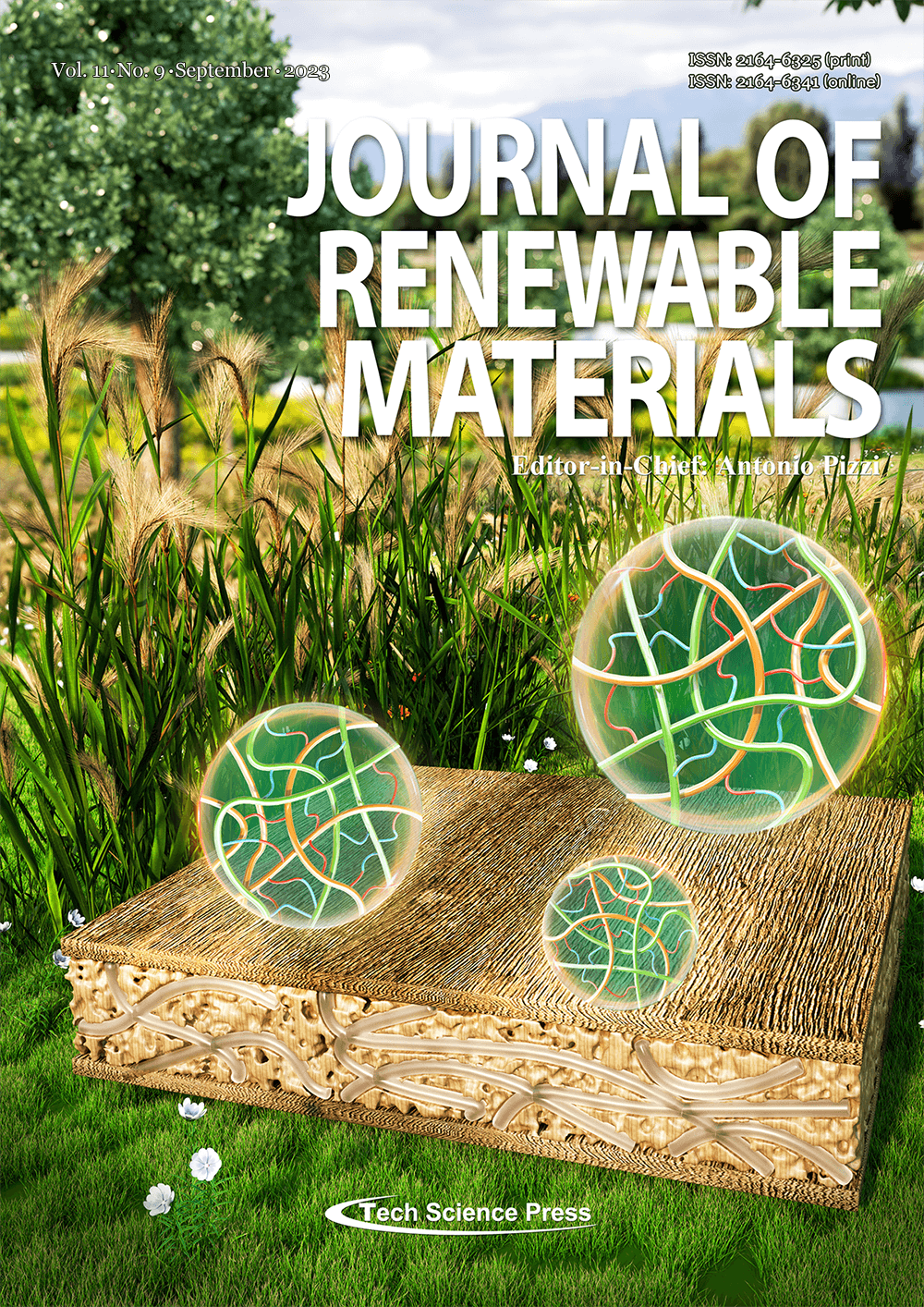Urban Plant Biomass Residues from the Neotropics and Their Potential for Thermal Energy Generation
John Freddy Gelves Díaz1,*, Ludovic Dorkis2, Richard Monroy-Sepúlveda1, Sandra Rozo-Rincón1, Gabriel de Jesús Camargo Vargas3
Journal of Renewable Materials, Vol.11, No.9, pp. 3547-3566, 2023, DOI:10.32604/jrm.2023.029267
- 20 July 2023
Abstract The material associated with tree pruning in a city in the Colombian neotropics was characterized in order to
determine its energy potential. The species studied for their relevance in the territory were Prosopis juliflora, Licania tomentosa, Terminalia catappa, Azadirachta indica, Pithecellobium dulce, Ficus benjamina and Leucaena leucocephala. Moisture content, bulk density, hygroscopic response, elemental chemical analysis, proximal analysis,
calorific value, ease of ignition and combustion, thermogravimetric and heat flow analysis, steam generation capacity, and qualitative analysis of gases (mass spectrometry) were determined. The results that were obtained show
high initial moisture contents that vary between 37% and 67% and a variable density… More >
Graphic Abstract
